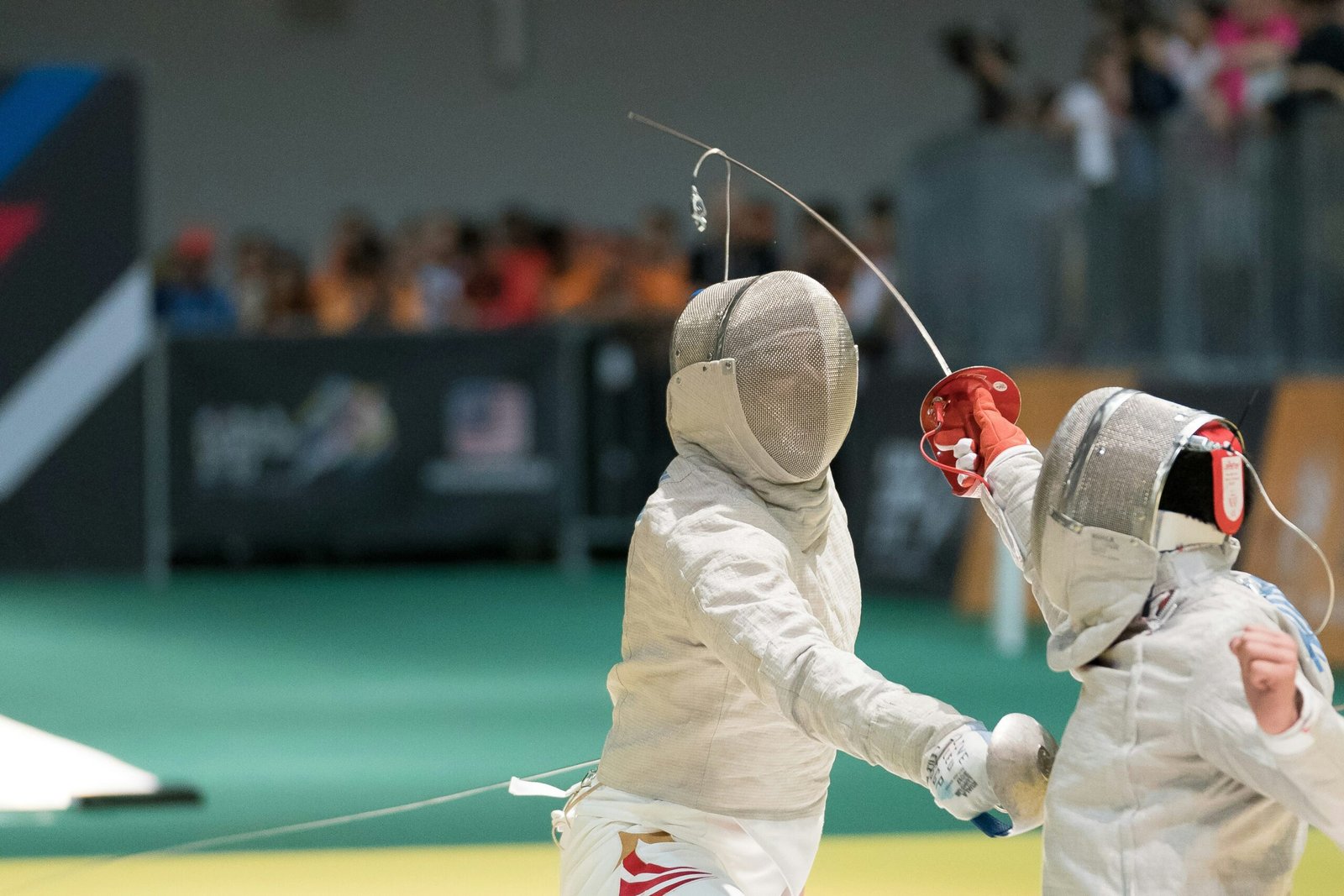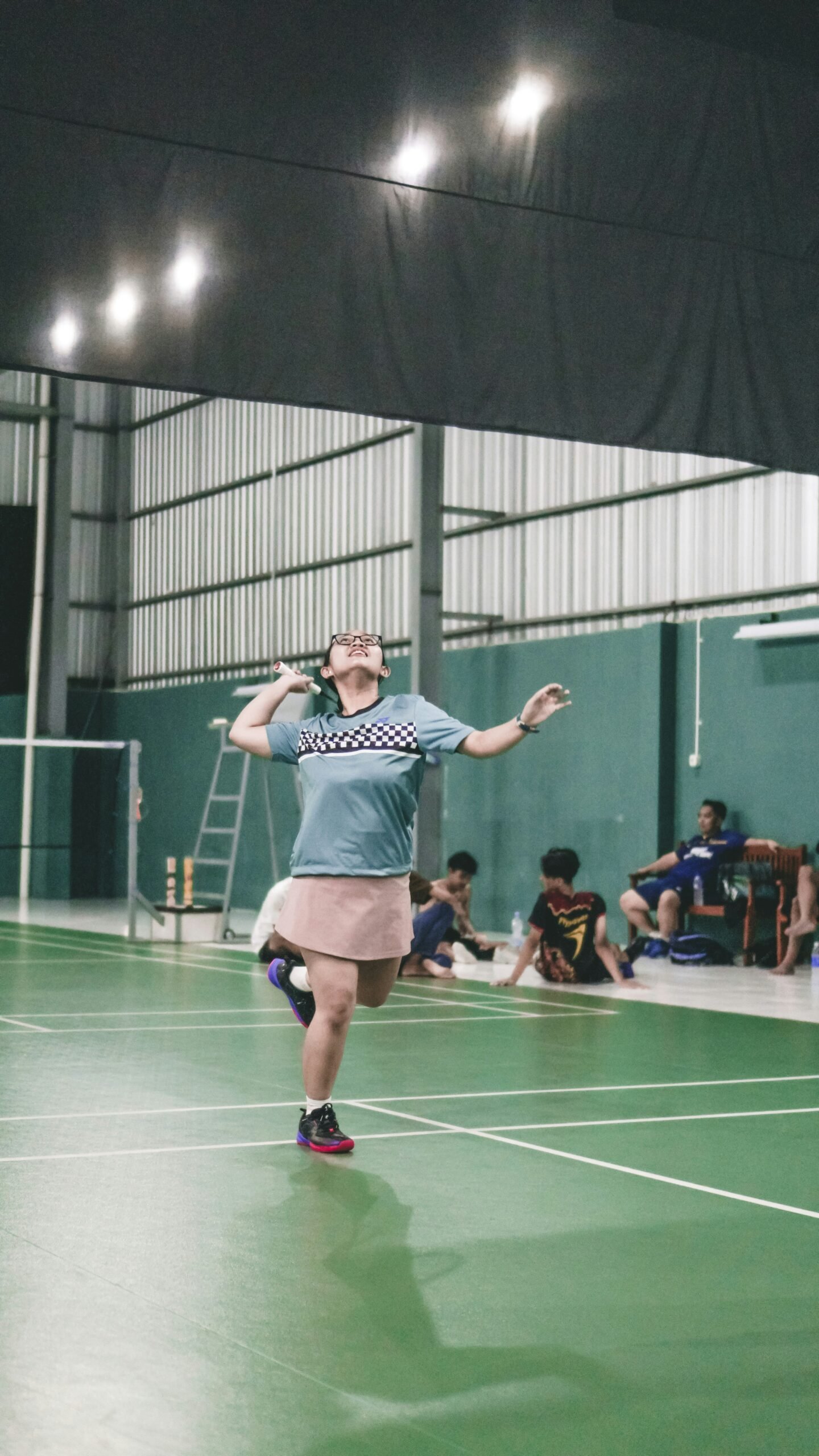Introduction to Sepak Takraw
Sepak takraw is an exhilarating sport that has captured the hearts of many across Asia. Combining elements of traditional kicking games and volleyball, it is played by two teams, each comprising either one or three players. The game is characterized by the use of a rattan ball, which players strike over a net using their feet, head, knees, and chest, excluding the use of their hands. This unique aspect sets sepak takraw apart from other sports, as it emphasizes agility, dexterity, and coordination.
The objective of the game is simple: teams aim to score points by hitting the ball into the opposing team’s court, ensuring that the ball does not touch the ground in their own territory. Matches are played in sets, and the first team to win two sets is declared the winner. The scoring system is typically based on rally scoring, meaning that a point can be won regardless of which team served the ball, thereby increasing the pace and excitement of the competition.
Originating in Southeast Asia, sepak takraw carries significant cultural importance and has evolved over centuries. Historical references suggest that similar games involving kicking a ball date back to ancient times, likely played in various forms across countries like Thailand, Malaysia, and Indonesia. As time progressed, the sport gained structure and became formalized, leading to the establishment of international governing bodies and standardized rules.
The allure of sepak takraw lies not just in its competitive nature but also in its accessibility. It can be played in various settings, from urban courts to rural open spaces, making it a popular pastime among diverse communities. Its growing popularity has positioned the sport as a vital aspect of cultural identity in many Asian regions, celebrating camaraderie through athleticism and entertainment.
Origins of Sepak Takraw
Sepak takraw, a sport characterized by its unique mix of agility and artistry, traces its origins to several traditional games played across Southeast Asia. Historical references suggest that the roots of this high-flying game can be found in the ancient sport known as “sepak raga,” which was commonly played in Malaysia and parts of the Indonesian archipelago. The term “sepak” translates to “kick” in Malay, while “raga” refers to a ball, underscoring the game’s fundamental mechanics involving kicking a rattan ball.
During the 15th century, it is believed that sepaktakraw evolved alongside cultural exchanges, particularly influenced by the trading routes that linked various Asian civilizations. These interactions facilitated the spread and adaptation of local sports, leading to the emergence of kick-based games. Notably, in Thailand, the sport became formally organized and is often credited with formalizing the rules and structure that govern it today. This adaptation was partly influenced by the Thai perspective on martial arts and physical prowess.
Furthermore, folklore and oral traditions surrounding the sport reveal its deep cultural significance. Many local legends highlight the prowess of past players who could defy gravity with their skills, indicating that sepaktakraw is not merely a sport but a performance art. In various communities across Southeast Asia, gatherings and tournaments often involve not just competition but also celebration, reinforcing social bonds and fostering regional pride.
Thus, the origins of sepak takraw are deeply rooted in the rich tapestry of Southeast Asian culture. The game’s evolution reflects the interplay of traditional practices, historical contexts, and cultural narratives that have shaped its current form. Understanding these origins provides valuable insights into the identity and significance of sepaktakraw in the contemporary sporting world.
Cultural Significance in Southeast Asia
Sepak takraw holds a prominent place in the cultural landscape of Southeast Asia, acting as a vital emblem of national identity and community spirit. This dynamic sport, characterized by its acrobatic displays and strategic gameplay, is more than merely a recreational activity; it embodies the rich traditions and values of the nations that embrace it. Countries such as Malaysia, Thailand, and Indonesia have integrated sepak takraw into their social fabric, often showcasing it during national festivals, community events, and local tournaments. These gatherings celebrate not just the sport itself but also the cultural pride that accompanies it.
In Malaysia, for example, sepak takraw is celebrated as a national sport, uniting people from diverse backgrounds. The sport fosters community bonding, encouraging local players to come together in teams and participate in friendly competitions. This collaborative spirit mirrors the Malaysian ethos of unity among its multi-ethnic population. Similarly, in Thailand, sepak takraw enjoys sports-star status, complete with professional leagues and significant government support, which reflects the sport’s status as a source of national pride.
Local tournaments, from village squares to urban arenas, are integral to the sport’s cultural expression. These events draw audiences that vary from friends and family to entire communities. During these occasions, spectators rally behind their teams, creating an electrifying atmosphere charged with communal support and pride. The vibrancy of these festivals enhances the cultural significance of sepak takraw, making it a medium through which people celebrate their heritage.
Thus, the sport encapsulates not only athletic prowess but also the values of cooperation, resilience, and cultural identity that bind Southeast Asian societies. The enduring popularity of sepak takraw serves as a reminder of the region’s rich cultural tapestry, making it a remarkable facet of Southeast Asia’s heritage.
Evolution of Rules and Gameplay
Sepak takraw, a sport deeply embedded in Southeast Asian culture, has undergone a remarkable evolution in its rules and gameplay since its inception. The game’s foundational aspects have been refined to enhance both competitiveness and spectator enjoyment. Traditionally, the sport was played casually in village settings, where the emphasis lay on enjoyment rather than strict adherence to rules. However, with the development of formalized competitions, distinct changes in gameplay have emerged.
One of the most significant changes has been in the scoring system. Initially, the game did not have a standardized scoring method, causing discrepancies in how points were awarded. Over the years, a rally scoring system was adopted, akin to formats seen in volleyball. This project enables teams to score points regardless of who served, thus intensifying the game and making it more engaging for both players and spectators.
Furthermore, the evolution of player positions in sepak takraw has substantially impacted gameplay dynamics. Early forms of the game often saw players adopting more static roles, but contemporary gameplay highlights strategic versatility. Players nowadays are expected to possess multifunctional skills, allowing them to transition fluidly between roles such as serving, attacking, and defending. This shift has resulted in a more fluid style of play, characterized by a series of acrobatic maneuvers and intricate teamwork.
In addition, advancements in techniques, particularly with the use of the feet, head, knees, and chest for ball control, have introduced a level of athleticism that showcases the players’ talents. The introduction of various kicks, dribbles, and stylish spikes enhances the sport’s visual appeal while demanding a higher skill level from participants. As the rules of sepak takraw continue to evolve, the game adapts, ensuring that it remains relevant and challenging in the modern sporting landscape.
International Recognition and Growth
Sepak takraw, a sport deeply rooted in Southeast Asian culture, has witnessed significant strides in international recognition over the past few decades. The journey towards worldwide acknowledgment can be traced back to the formation of the International Sepak Takraw Federation (ISTAF) in 1989. This pivotal establishment aimed to standardize the rules of the game and promote sepak takraw on a global scale. With its formation, the groundwork was laid for competitive leagues and international tournaments, leading to broader interest from different countries.
In the years following the establishment of ISTAF, various international competitions began to emerge. The inaugural ISTAF World Cup was held in 1990 and marked a significant milestone in promoting the sport beyond its regional confines. This tournament showcased the skills of athletes from multiple nations, thereby expanding the sport’s appeal. Subsequently, the sport gained further traction when it was included in the Asian Games for the first time in 1990, establishing sepak takraw as a serious competitive discipline among Asian nations.
The growth of sepak takraw continued into the 21st century with the introduction of various international leagues, fostering increased participation from a diverse array of countries. Additionally, the establishment of the Sepak Takraw World Championship has attracted even more global attention, highlighting the sport’s evolving nature. These tournaments not only provide a platform for athletes to display their skills but also serve as a means to strengthen camaraderie among nations through sportsmanship.
Furthermore, the sport’s inclusion in multi-sport events like the SEA Games contributes to its heightened visibility, drawing in new fans and athletes alike. Today, with increasing engagement from non-traditional countries, sepak takraw stands at the precipice of further international growth, promising a bright future for this dynamic sport.
Modern Variations and Innovations
Sepak takraw, an exhilarating sport known for its acrobatic display of skill and athleticism, has evolved significantly in recent years. While it has deep roots in Southeast Asian culture, modern variations are beginning to take shape both within Asia and on a global scale. The internationalization of this sport has led to new formats that engage a younger audience and inspire athletes worldwide.
One of the notable trends in the evolution of sepak takraw is the adaptation of its rules and gameplay to accommodate diverse playing styles. For instance, some regions have introduced mixed-gender teams, which not only promote inclusivity but also enhance the overall competitiveness of the sport. Additionally, the introduction of new tournament formats, such as 3-on-3 competitions, has generated greater interest and involvement, distinguishing it from traditional play.
Technological advancements have also played a significant role in transforming the landscape of sepak takraw. New training techniques leveraging biomechanics and sports science have emerged, enabling players to enhance their skills more effectively. Coaches are now incorporating video analysis to scrutinize performance, allowing players to refine their techniques with precision. Strength and conditioning programs are becoming more prevalent, with athletes focusing on enhancing their agility, flexibility, and endurance to improve their overall game.
The equipment used in sepak takraw is also undergoing innovation. Traditionally made from rattan, modern balls are now increasingly composed of synthetic materials, resulting in improved durability and consistency in play. These innovations have made the sport more accessible and enjoyable for new players, contributing to a growing interest in sepak takraw around the globe.
As the sport continues to evolve, it holds great potential for capturing the attention of a new generation of athletes, fostering both local and international engagement while respecting its rich cultural heritage. The modern variations and innovations in sepak takraw serve as a testament to its dynamic nature and enduring appeal.
The Role of Media and Technology
In recent years, media and technology have played an instrumental role in the promotion and dissemination of information about sepak takraw, thus enhancing the sport’s visibility on a global scale. With the advent of social media platforms such as Facebook, Instagram, and TikTok, fans and players alike are empowered to share content that showcases the athleticism and artistry inherent in this traditional sport. By posting videos and engaging stories, users can create a vibrant online community where the intricacies of sepak takraw can be appreciated beyond geographical boundaries.
Online streaming services have further revolutionized how fans access matches and tournaments. Websites and applications dedicated to sports streaming often include sepak takraw in their lineup, allowing viewers worldwide to watch live games or access replays. This increased accessibility ensures that people who may have never encountered the sport can appreciate its competitive nature and culture. Additionally, international competitions are now more visible through these platforms, contributing to a growing interest among audiences unfamiliar with sepak takraw.
Technological advancements in broadcasting have also improved the quality of coverage, bringing critical match details to the forefront. Enhanced production techniques, like multi-camera angles and slow-motion replays, allow spectators to witness the stunning agility and skill of players. As a result, audiences can engage with the sport more thoroughly and develop a deeper appreciation for its tactics and strategies.
Furthermore, the use of analytics and data tracking is increasingly common in sports, including sepak takraw. These technologies facilitate performance evaluation and strategy formulation, resulting in a more strategic approach to training and competition. Overall, the symbiosis of media and technology has not only promoted sepak takraw but has also set the stage for its potential growth in popularity across the globe.
Challenges and the Future of Sepak Takraw
Sepak takraw, often described as a unique and engaging sport, faces several challenges that threaten its growth and global recognition. Despite its increasing popularity in Southeast Asia, the lack of funding and resources remains a significant hurdle. Limited financial support restricts the ability of organizations to promote the sport, organize events, and provide training facilities for both athletes and coaches. The disparities in funding among various countries further exacerbate the issue, leading to a lack of competitive balance in international competitions.
Another challenge is the sport’s quest for global recognition. While tournaments and competitions are held throughout Asia, they often attract limited international attention. Efforts to include sepak takraw in prestigious global events, such as the Olympics, have encountered various obstacles. The sport’s governing bodies must take steps to enhance its visibility and appeal outside traditional regions, which may involve leveraging media coverage and digital platforms to engage a broader audience.
Furthermore, maintaining cultural integrity poses a challenge as the sport seeks to expand its reach. The essence of sepak takraw lies in its deep-rooted traditions and cultural significance in Southeast Asia. As the sport gains popularity internationally, there is a risk of its cultural practices being diluted or misrepresented. It is essential for stakeholders to ensure that whether through tournaments, training camps, or promotional events, the sport retains its cultural heritage while becoming more accessible to diverse audiences.
Looking ahead, the future of sepak takraw could be bolstered by strategic initiatives aimed at addressing these challenges. Collaborations between local sports associations and international bodies can create pathways for enhanced visibility and funding. Moreover, adopting a comprehensive marketing strategy that emphasizes both the athleticism and cultural aspects of the sport may attract broader participation. By navigating the existing challenges effectively, sepak takraw can secure its position as a respected global sport, ensuring its sustainability for generations to come.
Conclusion
In conclusion, the history of Sepak Takraw illustrates a rich tapestry of cultural significance, athletic prowess, and community spirit. Originating from Southeast Asia, this unique sport has evolved through centuries, weaving together tradition and modernity. The diverse influences from regional practices have shaped Sepak Takraw into a dynamic spectacle that captivates audiences both locally and internationally. The integration of acrobatic maneuvers and teamwork reflects not only physical skill but also camaraderie amongst players.
As we reflect on its past, it is essential to recognize the importance of preserving the cultural heritage associated with Sepak Takraw. The sport’s roots underscore its value as a symbol of national identity and pride in various Asian countries. Efforts to maintain and promote the traditional forms of the game are crucial in safeguarding this cultural legacy for future generations. Festivals and local tournaments play a vital role in engaging communities and fostering interest in the sport.
Looking ahead, Sepak Takraw faces significant opportunities on the global stage. With increasing recognition in international sporting events and a dedicated following, the potential for the sport to expand beyond its traditional boundaries is promising. The establishment of professional leagues and international championships can enhance competition and attract new talent, while also introducing the exhilarating nature of the game to a wider audience. By embracing a duality of honoring its past while aspiring towards a more inclusive future, Sepak Takraw can continue to flourish as a beloved and respected sport worldwide.






+ There are no comments
Add yours